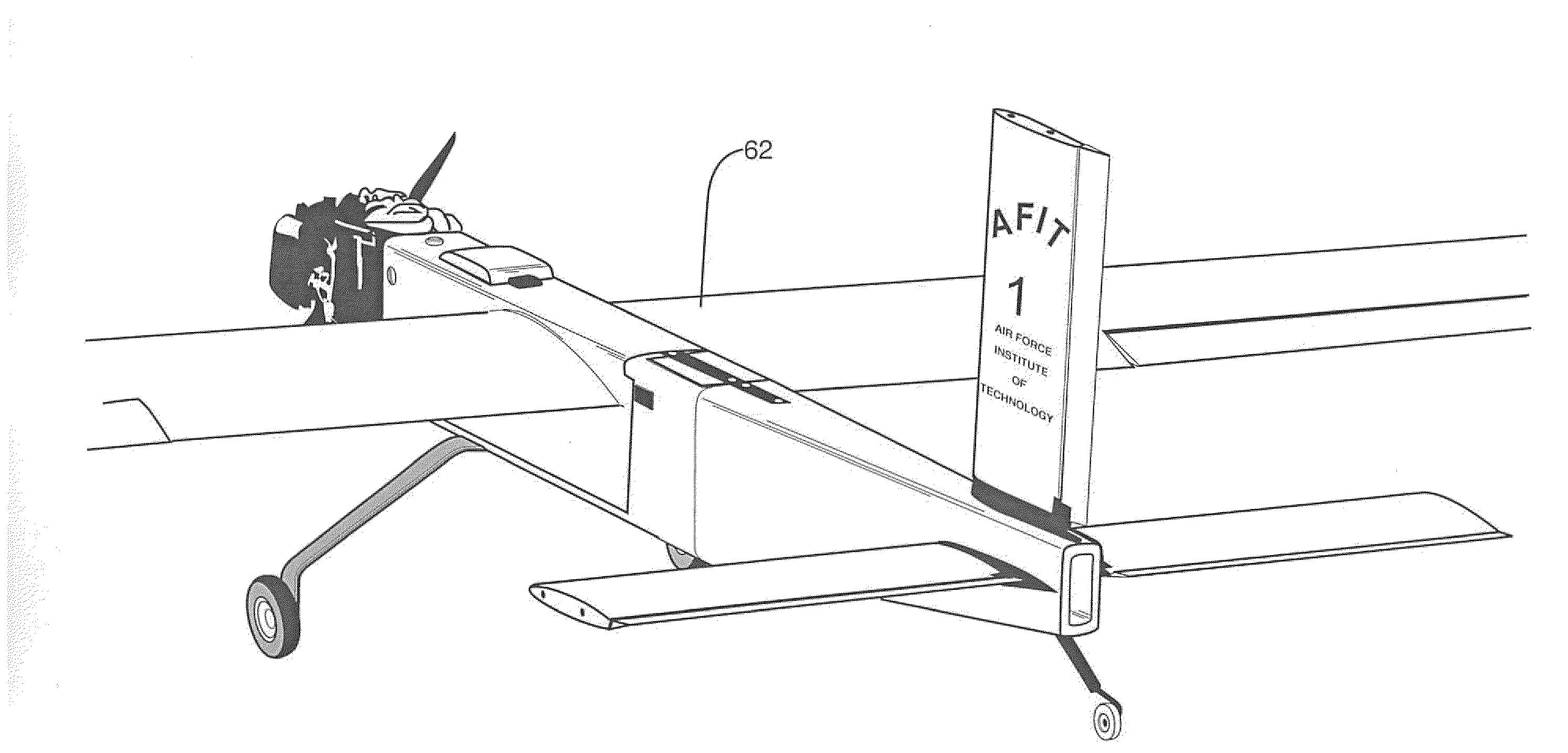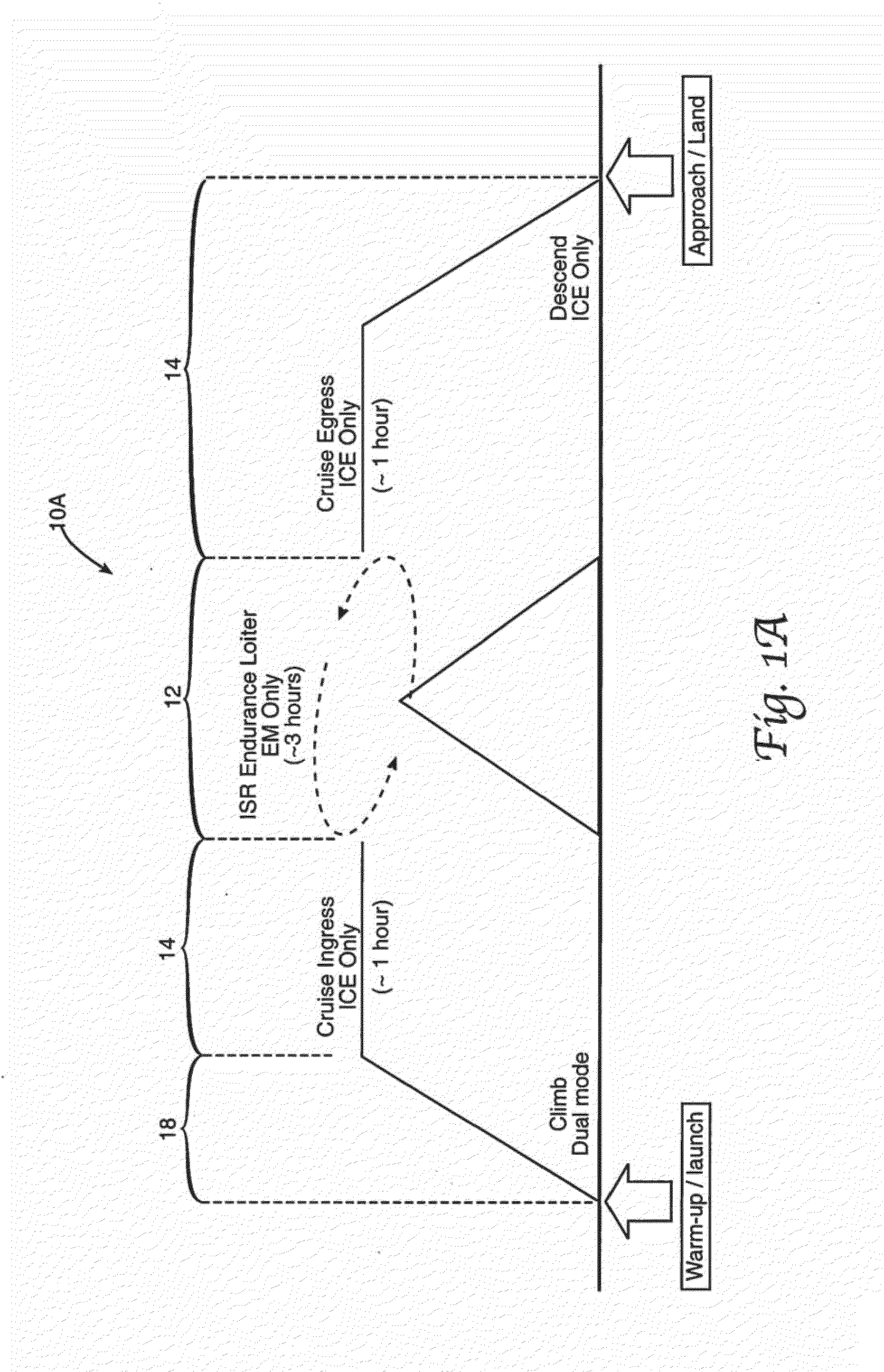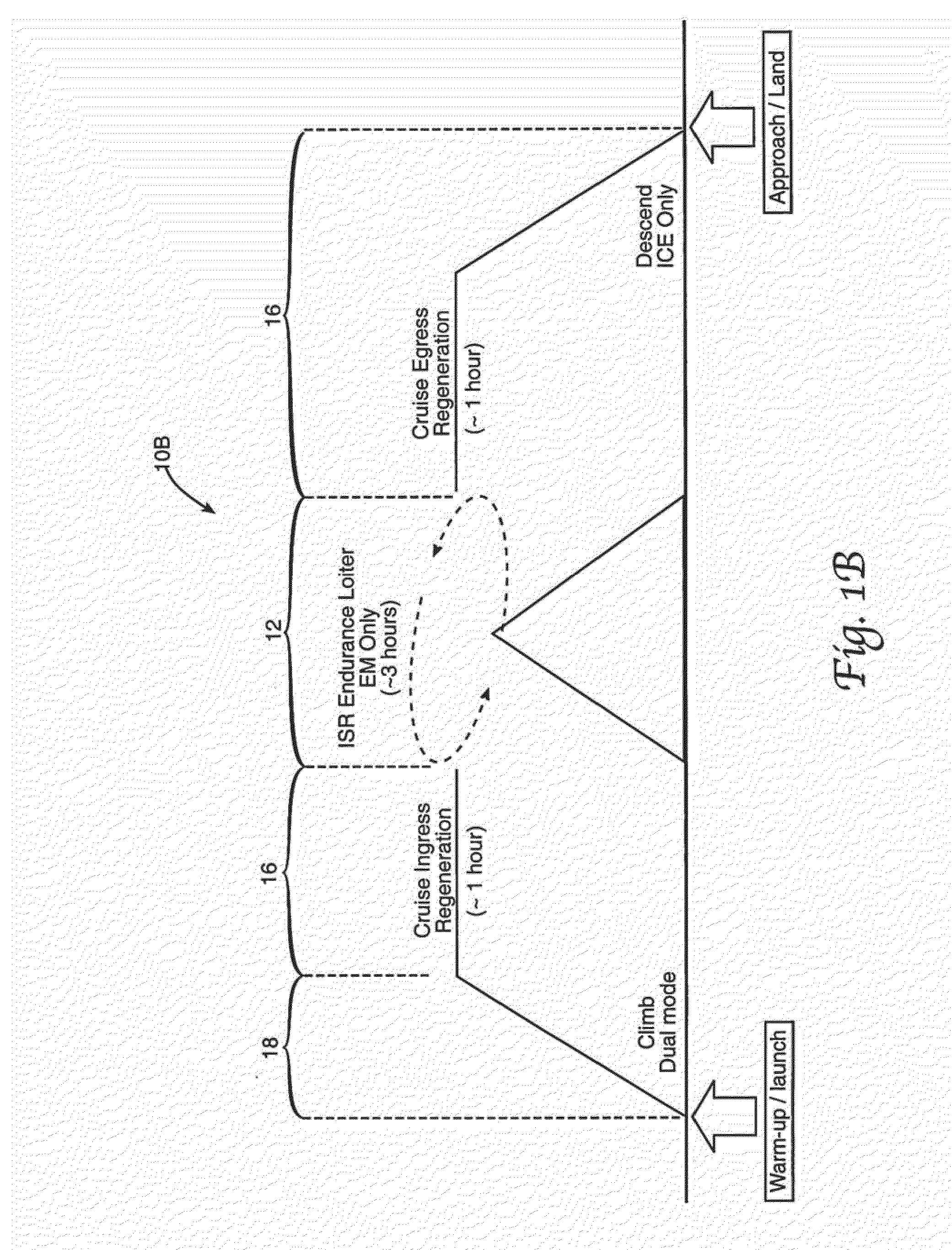Parallel Hybrid-Electric Propulsion Systems for Unmanned Aircraft
a hybrid electric and unmanned aircraft technology, applied in process and machine control, instruments, navigation instruments, etc., can solve the problems of insufficient endurance and/or stealth attributes of current fielded aircraft, unable to provide the results sought by the military, and continued primitive guidance technology affecting the effectiveness of unmanned aviation
- Summary
- Abstract
- Description
- Claims
- Application Information
AI Technical Summary
Benefits of technology
Problems solved by technology
Method used
Image
Examples
third embodiment
[0047]Two of the three embodiments, shown in FIGS. 2A and 2B, utilize an ICE 20 mechanically linked to an electric motor (EM) 22 to drive a propeller 24. The EM 22 may double as a generator during cruising operation to charge a battery pack in these embodiments. The third embodiment, shown in FIG. 2C, decouples the ICE 20 from the EM 22 and adds a second propeller 28 in a centerline-thrust configuration. In this embodiment, the battery pack 26 may be charged by wind-milling the second propeller 28 when cruising to turn the EM 22, though the recharging efficiency can be relatively low for this embodiment. For all three illustrated embodiments, the ICE 20 is powered by a conventional hydrocarbon fuel stored in a fuel tank 30. The ICE 20 in the embodiments shown in FIGS. 2B and 2C may be started or restarted with the use of a starter 32, whereas, the embodiment in FIG. 2A may utilize the EM 22 through a clutch 34 to start or restart the ICE 20. The clutch 34 may also be used to disenga...
second embodiment
[0052]The second embodiment, in FIG. 2B, provides a mechanically simpler option by adding a small electric starter 32 for the ICE 20, though other embodiments may utilize a mechanical starter in place of the electric starter 32. Rather than relying on the clutch 34 and matching the EM 22 and ICE 20 torques for starting purposes, a small, lightweight starter 32 may be attached to the ICE 20 and powered by the main battery pack 26. Like the previous embodiment, the electric-start configuration links the ICE 20 and the EM 22 to a single propeller 24 driveshaft 38. In addition, a controller (FIG. 3) may be coupled to at least one of the EM 22, ICE 20, starter 32, or battery pack 26. The avionics, flight control system and sensors may then be powered by the EM 22 acting as a generator during cruise flight. Again, the battery pack 26 may be used only to provide excess propulsion power and endurance operation. By eliminating the clutch 34, this configuration may provide a reliable and effi...
case 1
[0068] When the requested torque is less than the IOL Torque of the ICE at the speed as read from the torque map, the ICE provides the power for the aircraft.
ICEIOLTorque(rpm)>RequestedTorqueICEThrottle=RequestedTorqueICEMaxTorque(rpm)*100%(7)EMThrottle=0%(8)
PUM
 Login to View More
Login to View More Abstract
Description
Claims
Application Information
 Login to View More
Login to View More - R&D
- Intellectual Property
- Life Sciences
- Materials
- Tech Scout
- Unparalleled Data Quality
- Higher Quality Content
- 60% Fewer Hallucinations
Browse by: Latest US Patents, China's latest patents, Technical Efficacy Thesaurus, Application Domain, Technology Topic, Popular Technical Reports.
© 2025 PatSnap. All rights reserved.Legal|Privacy policy|Modern Slavery Act Transparency Statement|Sitemap|About US| Contact US: help@patsnap.com



